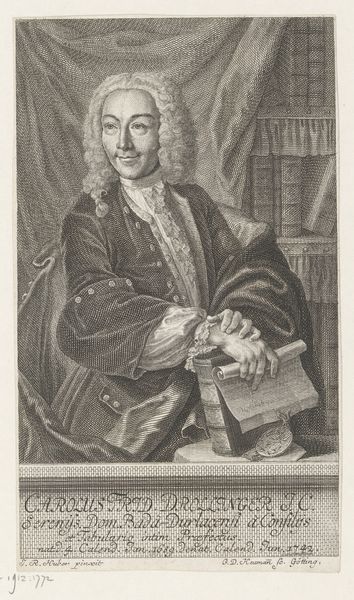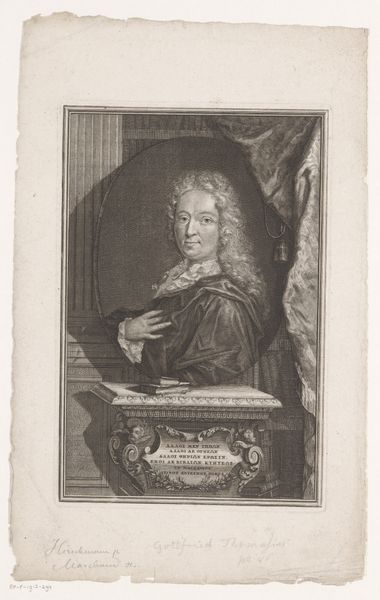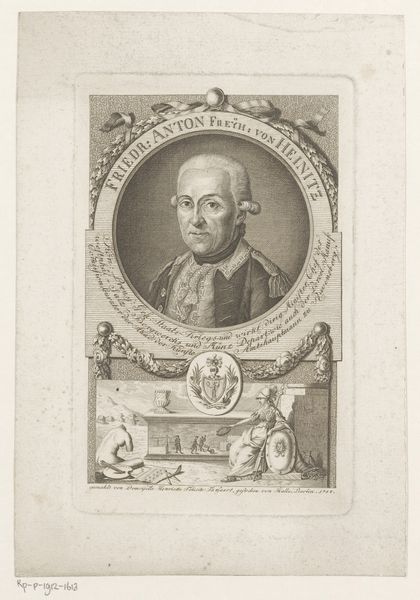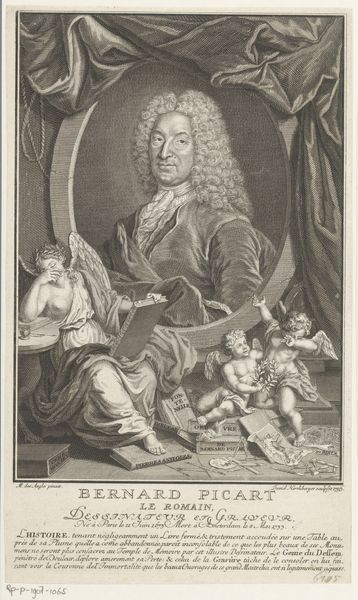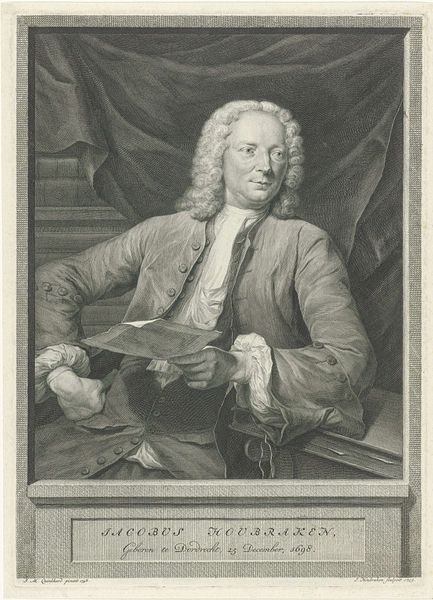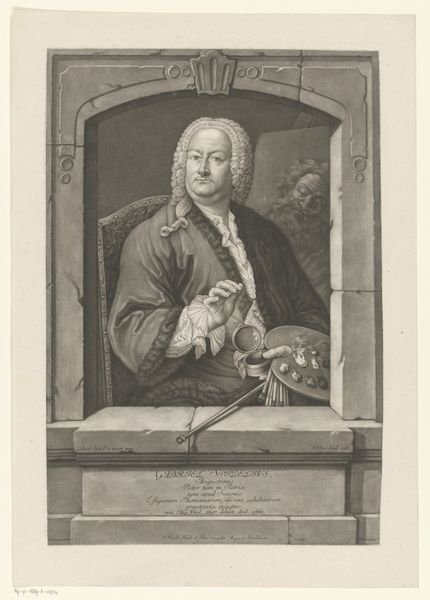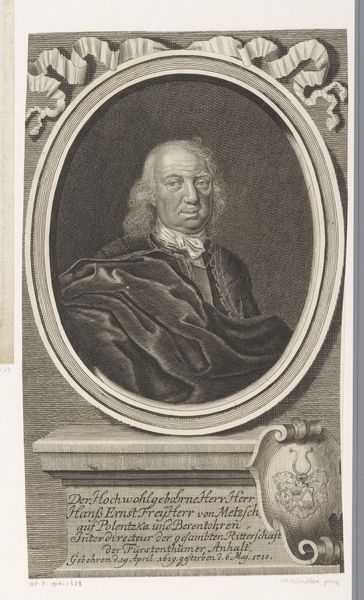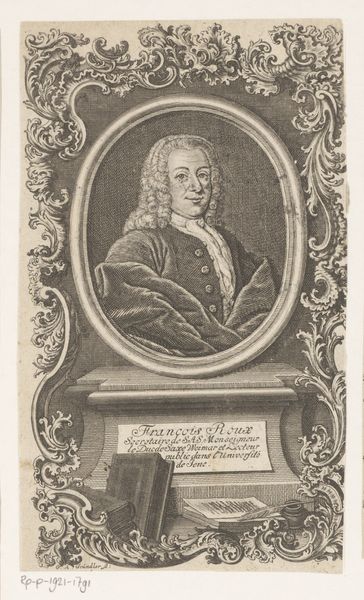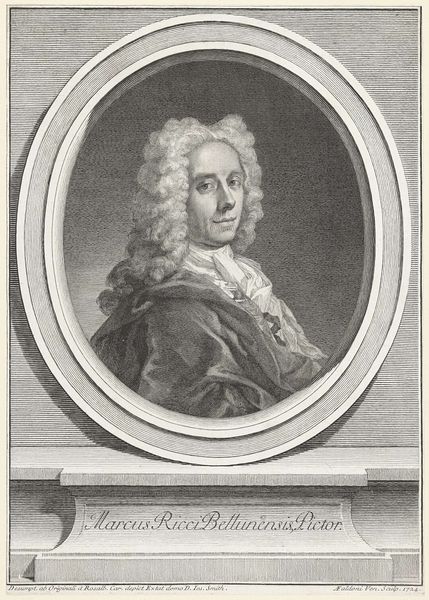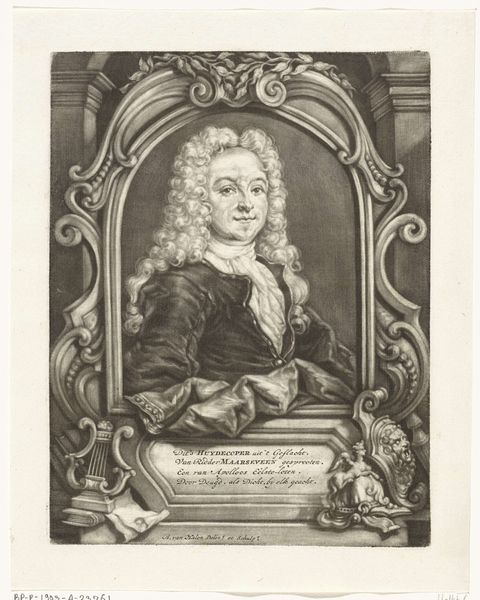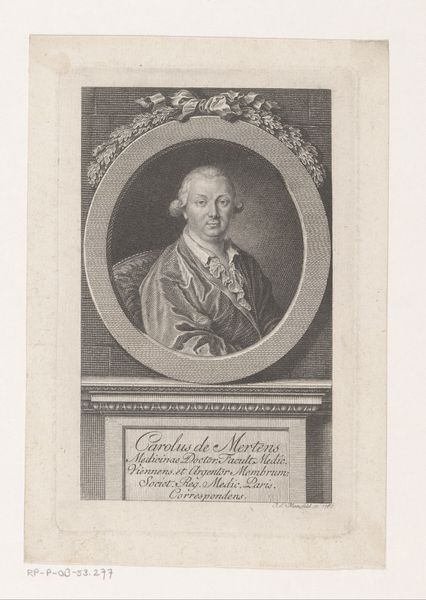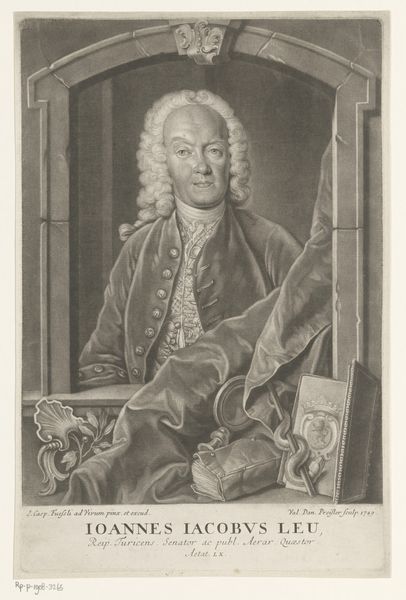
Dimensions: height 168 mm, width 110 mm
Copyright: Rijks Museum: Open Domain
Curator: What immediately strikes me about this engraving is its subdued tone; the grayscale rendering evokes a quiet, contemplative mood. Editor: Indeed. This is an engraving titled "Portret van Egid Verhelst I," dating roughly from 1749 to 1818, attributed to Aegid (II) Verhelst, and it’s held here at the Rijksmuseum. Curator: The artist's technical skill is remarkable. Note the intricate details rendered through line work—particularly in the fabrics and the subject's wig. Observe, too, how the differing densities of the marks modulate volume. Editor: What's compelling is situating Verhelst—a celebrated sculptor—within the social and political structures of his time. This piece subtly reveals how artists like Verhelst navigated patronage, and constructed their public image within the rigid hierarchies of the Baroque era. It’s telling, I think, that he chose to represent himself with a cherubic sculpture. Curator: Interesting point, although I am drawn to how Verhelst used the contrasting textures—smooth skin against the intricately draped fabrics, to draw the viewer’s eye towards his subject’s gaze, achieving an intense, psychologically charged portrait. It transcends mere representation, offering something akin to interiority. Editor: To be sure. But that gaze, directed outward, could also signify an appeal, not just for aesthetic appreciation, but perhaps, also for social recognition or continued patronage within a very exclusive and power-sensitive circle. It certainly underscores the dynamics of artistic creation within 18th-century society. Curator: Fair enough, perhaps the genius of it all is its capacity to work at both levels. Editor: Exactly, it presents the observer the occasion to question art history within contemporary, relevant dialogues of gender, identity and power. It shows us art can exist at both the aesthetic level and socio-historic.
Comments
No comments
Be the first to comment and join the conversation on the ultimate creative platform.
